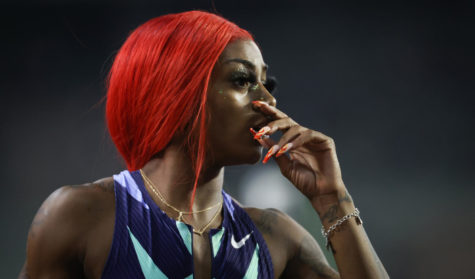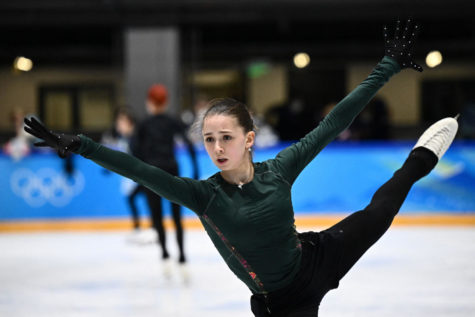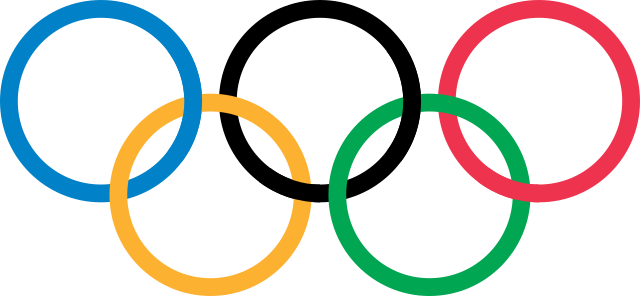More Than Just Drug Use Violations
Competitive fairness should not be punished so inconsistently at the highest level of athleticism in the world.
Olympic rules are not being enforced equally or fairly, and athletes are suffering because of it.
Sha’Carri Richardson and Kamila Valieva, both Olympic level athletes, had similar falls from grace. Both women were phenoms and crowd favorites, anticipated to dominate their event. Richardson broke the national collegiate record in the 100 meter dash, and Valieva became the first woman to ever land a quadruple jump in the Olympics.
Both women also failed their drug test. Despite the uncanny similarities in their situations, Richardson was not allowed to compete, but Valieva was given the “all clear” to participate.

Shockingly, this decision was made even with Valieva testing positive for trimetazidine, a drug banned in the Olympics by the World Anti-Doping Agency because of its intense performance enhancing capabilities. Richardson only tested positive for marijuana, which is not considered a performance enhancing drug. While still barred from Olympic athlete usage in competition, it is legal for recreational use in the U.S. state that Richardson used it in.
The biggest difference in the two seemingly similar cases is that Valieva, unlike Richardson, is 15 years old. The World Anti-Doping Code allots more protection for athletes under 16, and doesn’t always hold them accountable for a doping violation. With Valieva only being 15, her age was the basis for the decision made that allowed her to skate.
While Valieva herself may not be held accountable, there is no doubt that she still should not have been allowed to compete in the event, especially if Richardson was barred from doing so.
The case becomes more complicated because of Valieva’s age, but her age does not diminish the massively unfair advantage that she clearly has over her competitors. Whether she is held legally accountable or not, the decision to bar her from the games should have been obvious.
Another factor that should have contributed to her being banned from competing is the clear precedent set by Team U.S.A.’s decision concerning Richardson. Both athletes used drugs banned by the World Anti-Doping Agency, but one was allowed to participate while one was forced to the sidelines. The Olympic Games are the highest level of athleticism in the world, so why are their policies being enforced so inconsistently? The answer might lie in the nationality of their competitors.

Russia has been stripped of more Olympic medals than any competing country in the world due to failed drug tests, and were completely banned from competing in the Winter Olympics for four years in 2019 after a massive Russian doping scandal was revealed.
Despite such findings, there has been little done to actually punish Russia for their blatant cheating. Most of the 43 lifetime bans imposed on Russian athletes have been overturned by the Court of Arbitration for Sports. Even though Russia is technically banned from competing, Russian athletes can still compete under the Russian Olympic Committee instead of the country of Russia. The original four year ban was later reduced to two years. Now, Kamila Valieva was allowed to compete in her event despite testing positive for a performance enhancing drug.
Russia has consistently been getting off with little more than a slap on the wrist, while other Olympic athletes are having medals stolen from them due to the court not sufficiently allotting punishments for Russian rule breaking.
Yet, when we look to the U.S., we see a much more proactive approach. Richardson tested positive for marijuana during the Olympic trials. Because it is prohibited for athletes to use marijuana while competing at the Olympic level, Richardson was immediately removed from the team.
Adversely, Valieva’s positive drug test did not come to light until months later: after she had already competed in the first part of the individual skating competition. The Court of Arbitration for Sports was forced to handle the case after her team disputed the charges, then making the controversial decision allowing her to compete.
The fact that these two drug violations were handled in vastly different ways brings to light a lot of questions about the consistency and bias that the International Olympic Committee is willing to allow in their games.
The job of the Court of Arbitration for Sports is to ensure a fair and equal competition, which they clearly failed to do. At the Olympic level, these discrepancies are unacceptable; the court needs to start following the regulations set to ensure fairness across the board. It should not only be the job of the individual nation to ensure that the rules are being followed. If the court fails to uniformly enforce its rules, more talented athletes such as Richardson will lose their chance at an Olympic medal, while others who bend the rules will be allowed to upset the fairness of the entire Olympics.







